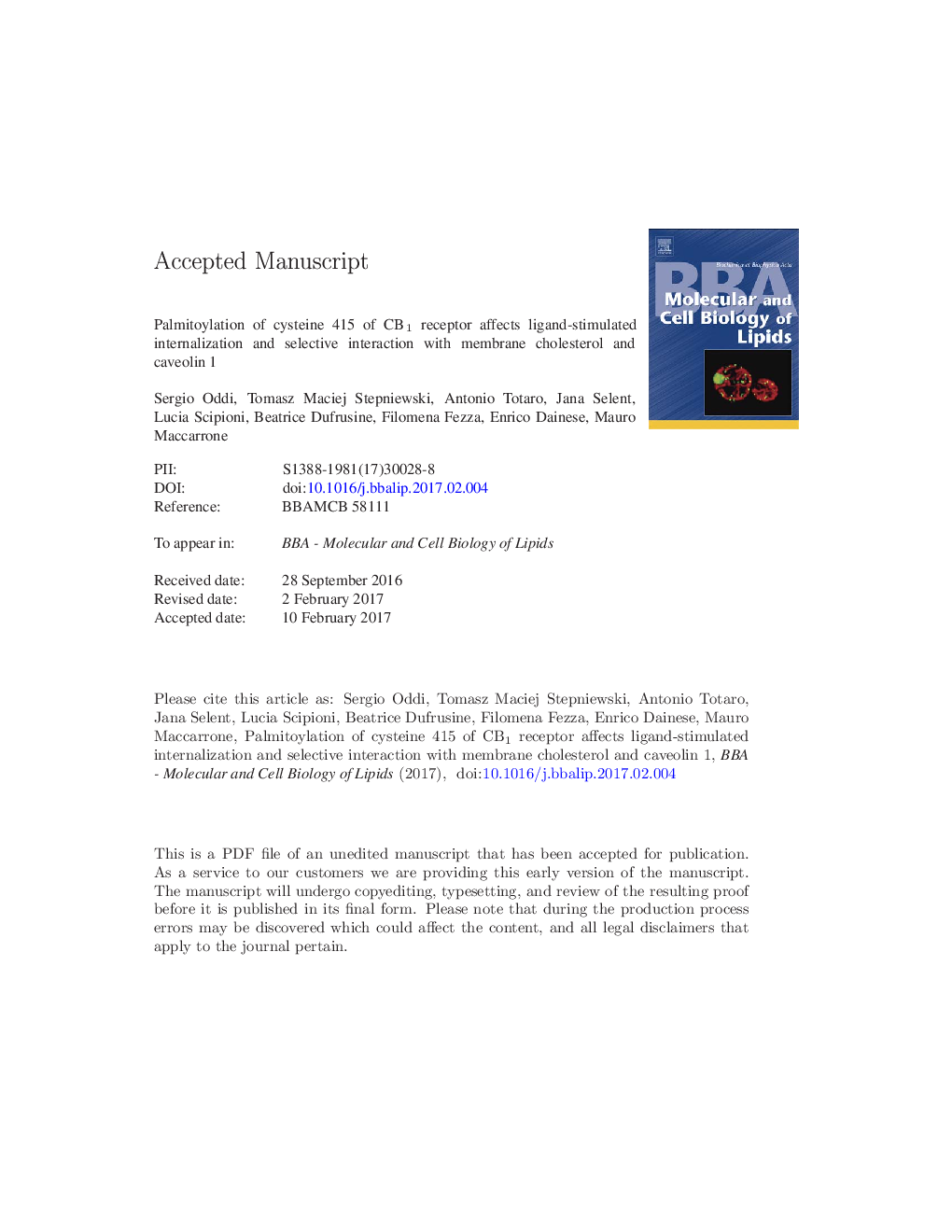| Article ID | Journal | Published Year | Pages | File Type |
|---|---|---|---|---|
| 5508385 | Biochimica et Biophysica Acta (BBA) - Molecular and Cell Biology of Lipids | 2017 | 34 Pages |
Abstract
We previously demonstrated that CB1 receptor is palmitoylated at cysteine 415, and that such a post-translational modification affects its biological activity. To assess the molecular mechanisms responsible for modulation of CB1 receptor function by S-palmitoylation, in this study biochemical and morphological approaches were paralleled with computational analyses. Molecular dynamics simulations suggested that this acyl chain stabilizes helix 8 as well as the interaction of CB1 receptor with membrane cholesterol. In keeping with these in silico data, experimental results showed that the non-palmitoylated CB1 receptor was unable to interact efficaciously with caveolin 1, independently of its activation state. Moreover, in contrast with the wild-type receptor, the lack of S-palmitoylation in the helix 8 made the mutant CB1 receptor completely irresponsive to agonist-induced effects in terms of both lipid raft partitioning and receptor internalization. Overall, our results support the notion that palmitoylation of cysteine 415 modulates the conformational state of helix 8 and influences the interactions of CB1 receptor with cholesterol and caveolin 1, suggesting that the palmitoyl chain may serve as a functional interface for CB1 receptor localization and function.
Keywords
Related Topics
Life Sciences
Biochemistry, Genetics and Molecular Biology
Biochemistry
Authors
Sergio Oddi, Tomasz Maciej Stepniewski, Antonio Totaro, Jana Selent, Lucia Scipioni, Beatrice Dufrusine, Filomena Fezza, Enrico Dainese, Mauro Maccarrone,
